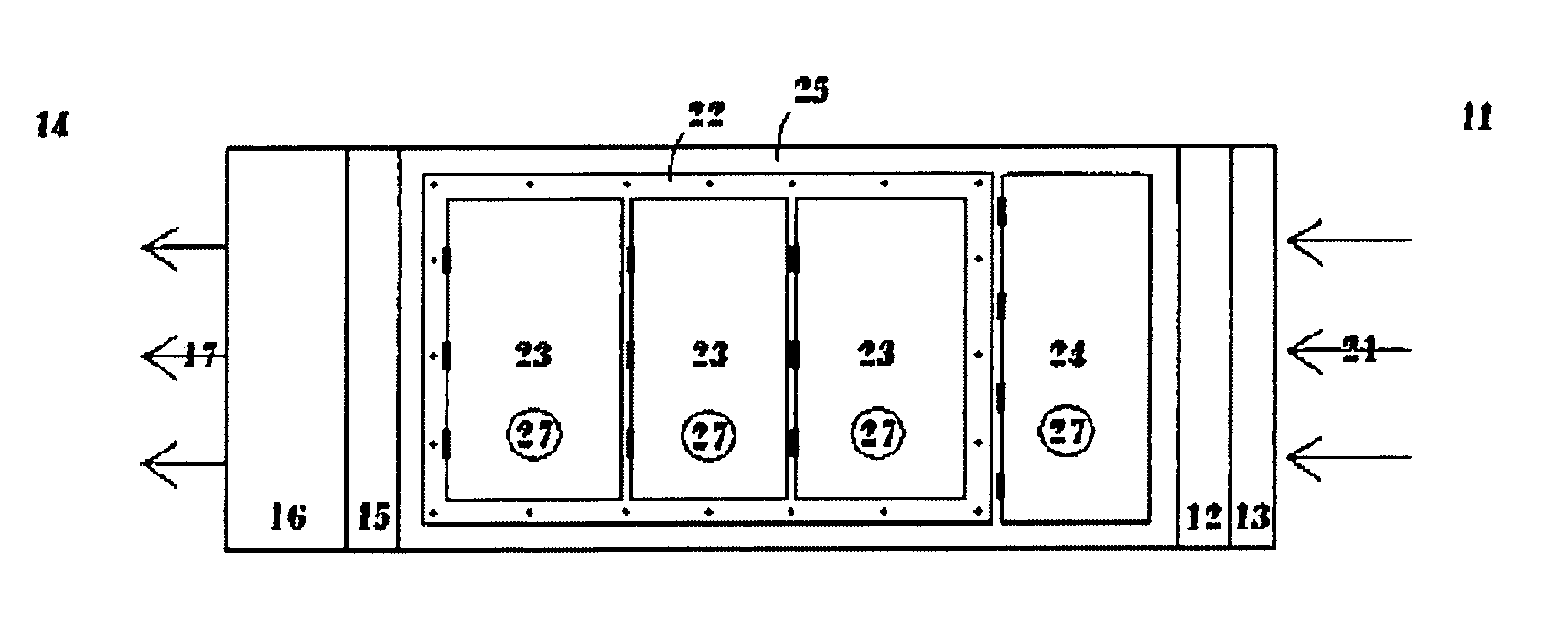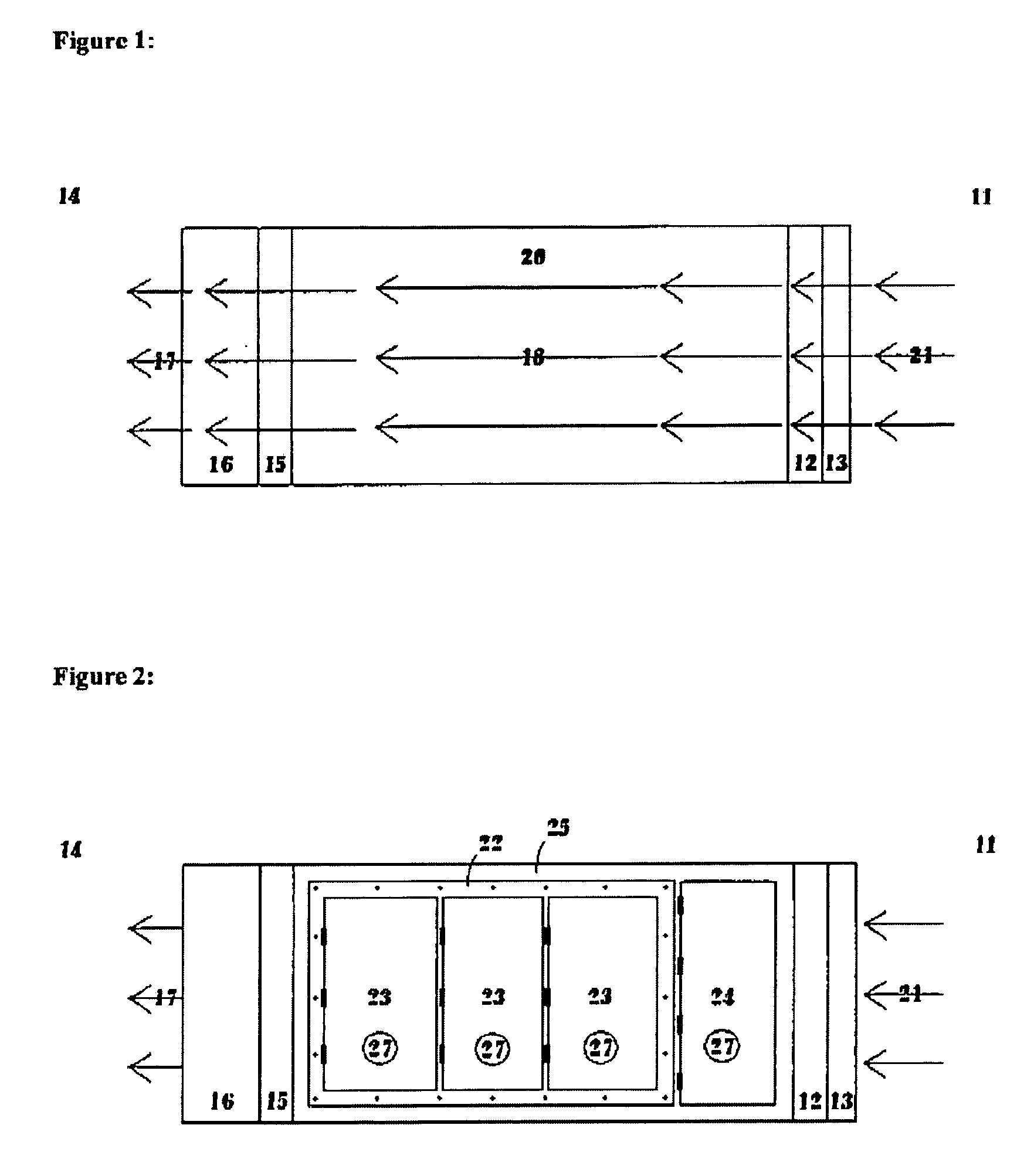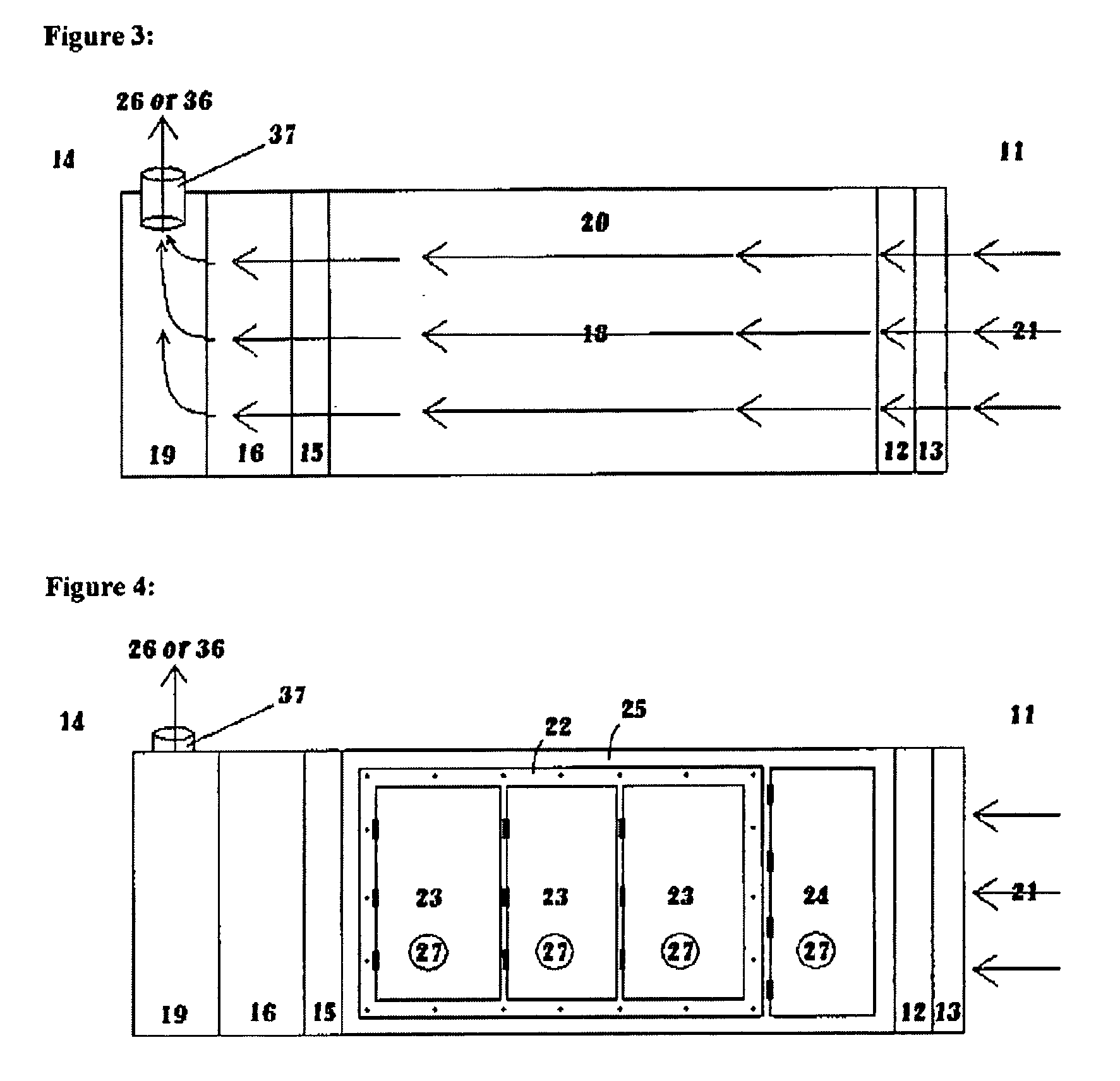Dual filtration lateral flow containment enclosure
a technology of lateral flow and containment enclosure, which is applied in the direction of isotope separation, dispersed particle separation, hazardous material storage, etc., can solve the problems of compromising product protection, contaminated air continuously entering the enclosure, and breaching the containment of hazardous materials, so as to prolong the life of the filtration arrangement, prevent the build-up of chemical fumes, and save the cost and space of purchasing and installing
- Summary
- Abstract
- Description
- Claims
- Application Information
AI Technical Summary
Benefits of technology
Problems solved by technology
Method used
Image
Examples
Embodiment Construction
[0046] Unless defined otherwise, all technical and scientific terms used herein have the same meaning as commonly understood by one of ordinary skill in the art to which the invention belongs. Although any methods and materials similar or equivalent to those described herein can be used in the practice or testing of the present invention, the preferred methods and materials are now described. All publications mentioned hereunder are incorporated herein by reference.
[0047] When working with hazardous materials, institutions (such as laboratories, hospitals, and government agencies) must provide protection for their personnel, the environment, and often for the products that they are working with. The invention described herein is a containment solution for the safe manipulation of hazardous materials. This invention was specifically created to meet the need for an enclosure that efficiently provides the highest possible levels of personnel, product, and environmental protection in a...
PUM
 Login to View More
Login to View More Abstract
Description
Claims
Application Information
 Login to View More
Login to View More - R&D
- Intellectual Property
- Life Sciences
- Materials
- Tech Scout
- Unparalleled Data Quality
- Higher Quality Content
- 60% Fewer Hallucinations
Browse by: Latest US Patents, China's latest patents, Technical Efficacy Thesaurus, Application Domain, Technology Topic, Popular Technical Reports.
© 2025 PatSnap. All rights reserved.Legal|Privacy policy|Modern Slavery Act Transparency Statement|Sitemap|About US| Contact US: help@patsnap.com



